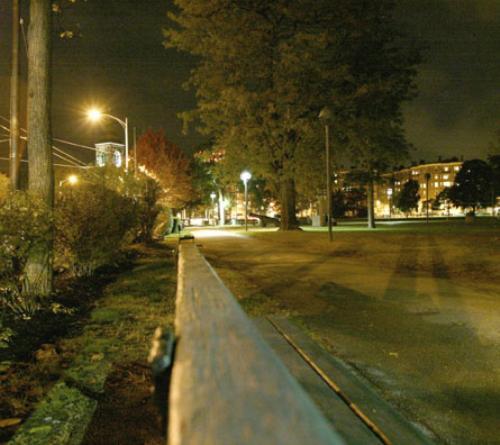
News
Summers Will Not Finish Semester of Teaching as Harvard Investigates Epstein Ties

News
Harvard College Students Report Favoring Divestment from Israel in HUA Survey

News
‘He Should Resign’: Harvard Undergrads Take Hard Line Against Summers Over Epstein Scandal

News
Harvard To Launch New Investigation Into Epstein’s Ties to Summers, Other University Affiliates

News
Harvard Students To Vote on Divestment From Israel in Inaugural HUA Election Survey
Harvard Pays for Callboxes in Common

Three emergency callboxes will be added to Cambridge Common this fall—with Harvard footing the bill—to ensure that students en route to the Quad have quicker access to police in case of an emergency.
Harvard shelled out $12,000 total—$4,000 a callbox—to help convince the city that the currently dimly-lit park was unsafe. The city has also agreed to redirect existing lighting to better cover the main path of traffic—the path mostly trekked by students on their way to the Quad from the main campus.
These improvements come a full year after an Oct. 23, 2003 assault of a Harvard undergraduate who was allegedly groped by an unidentified assailant around 8:30 p.m. in Cambridge Common. This was one of 12 reported incidents of assault around campus in the fall and winter of 2003.
Cambridge Police Department (CPD) spokesperson Frank T. Pasquarello said the unusual number of assaults were not the major motivating factor in getting the callboxes—which provide a direct link to the CPD—installed.
“It’s not the reason,” Pasquarello said. “It’s just an external layer of protection in case someone needs help.”
But Undergraduate Council President Matthew W. Mahan ’05 said he thought the recent assaults were a major help in expediting the decision to buy the callboxes.
“Without the political capital gained by the situation, I don’t know if the University and the city would have been convinced,” Mahan said. “The city and the University were not initially for it. The University does not want to get in the habit of providing what they perceive as public goods.”
Council Student Affairs Chair Matthew J. Glazer ’06, who spearheaded the council’s campaign for callboxes, wrote in an e-mail to the council that it was “an uphill battle with both the city and the administration.”
Glazer, who met with Mayor Michael A. Sullivan about the callboxes last year, said the city initially resisted the idea because Cambridge did not have the funds to install the boxes.
“I brought this issue up because at orientation they said, ‘you can’t go into Cambridge Common at night,’” he said.
Pasquarello said the callboxes will make responding to emergencies easier but pointed to the false alarms that other callboxes garner as a potential drawback.
“Hopefully people won’t abuse the system,” he said.
Mahan said he asked “really hard questions” and even contacted the Boston Globe to exert pressure on the administration to transfer money over to the city.
“When we have hundreds of students walking across the Common, it is essential that we take every step to ensure that we’re safe,” Mahan said. “Blue light phones are a no-brainer.”
—Staff writer Robin M. Peguero can be reached at peguero@fas.harvard.edu.
Want to keep up with breaking news? Subscribe to our email newsletter.
